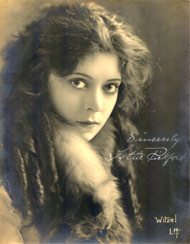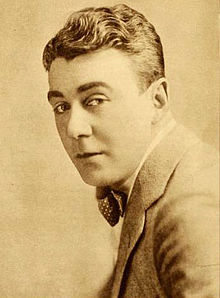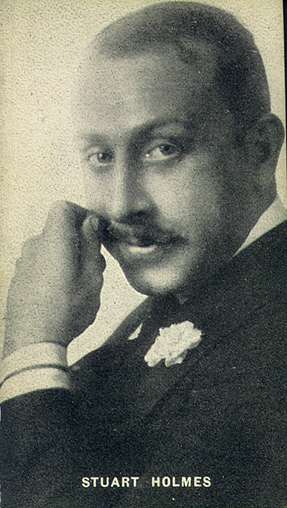Did you know Bayou St. John once had a career in silent film?
It’s true—our bayou served as the outdoor set to a number of films shot in New Orleans starting around 1911, including, but not limited to, Heinie’s Pilgrimage, The Pearl from India, The Belle of New Orleans, A Mardi-Gras Mix-Up, and Girls Strikers. Kalem Company, a film company founded in New York City in 1907, set up a studio on the bayou’s banks, which it praised as “one of the most picturesque places in New Orleans.” [1]
In The Pearl of India, the bayou played a more prominent role—dare I say it was almost a character itself? The film’s climactic scene included a leap from one of the bayou’s bridges, and a collision of a speedboat and a skiff (containing “the detective,” presumably the film’s hero) on the bayou’s waters. [2] How I wish I could find this film so I could see the bayou do its thing!
Two local New Orleans women who once acted in these films were interviewed by the Times-Picayune in 1962. Lillian and Tillie Touzet (only the best names ever!) appeared as extras in both Heinie’s Pilgrimage and Girl Strikers, at the age of 17 and 14, respectively. For Heinie’s Pilgrimage, they were each paid $5 per day plus a “noonday meal.” According to the article, “The Kalem studios consisted of one outdoor set and a combination office-dressing room-cafeteria building” on Bayou St. John. [3]
Lillian reflects, “I don’t think artificial lighting was used at all…although it does seem to me that reflectors were used to throw sunlight into the faces of those on the camera.” Tillie remembers, “Tom Moore was the leading man in both pictures, and Lottie Pickford was the leading woman. The heavy, or villain, was Stewart Holmes.” [3]

Silent film actress Lottie Pickford

Silent film actor Tom Moore

Silent film actor Stuart (sometimes credited “Stewart”) Holmes
The article goes on: “In ‘Girl Strikers,’ Lillian’s salary was doubled to $10 per shooting day, and she played the role of a young, tuberculosis-stricken girl in a cigarette factory. The story idea was simple. The girls…went on strike against factory owner Stewart Holmes for more pay and better working conditions.…Even though the films were silent, actors and actresses had to rehearse lines and gestures before each scene was shot.” [3]
Other tidbits:
1. In Belle of New Orleans, Moore and Holmes starred alongside an English actress whose name history has since forgotten. Lillian recalls, “Seems [the actress] couldn’t register shock or indignation to the director’s satisfaction. Holmes solved the problem. With his back to the camera, so lip readers couldn’t see his face, he insulted her and cursed her. She showed shock and indignation….The director said it was the best bit of acting she had ever done.” The Englishwoman promptly resigned once the film was completed. So it sounds like Holmes was the villain on-set as well—a “heavy” of the patriarchy, if you will. How meta! [3]
2. The Belle of New Orleans was shot—gasp!—at the Old Jockey Club, aka The Luling Mansion, in 1912! Within a couple months of the film’s shooting, the estate was taken over by developers who hoped to turn the mansion into apartments and the land into “one of most beautiful residential parks in country”—and to connect this tract with other residential neighborhoods blossoming all over the newly-drained city. What I wouldn’t give to see just a single scene from that film! [4]
1. “Sixth Kalem Company at New Orleans,” Moving Picture World, 1912:11 pp309]
2. ”News And Notables At The New Orleans Hotels. Kalem Moving Picture Studio Located Here Because.” Times-Picayune 28 Feb. 1912: 7. NewsBank. Web. 30 Nov. 2016.
3. Times-Picayune 7 Jan. 1962: 125. NewsBank. Web. 30 Nov. 2016.
4. “Real Estate. Arcadia Court Seeking to Purchase Myrtle Lane, Uniting the Two Splendid Tracts, and.” Times-Picayune 19 Mar. 1912: 10. NewsBank. Web. 30 Nov. 2016.
 NOLAbeings Multimedia artist Claire Bangser created NOLAbeings as a portrait-based story project that marries...
NOLAbeings Multimedia artist Claire Bangser created NOLAbeings as a portrait-based story project that marries...  Voodoo in New Orleans: Reviving history: New Orleans fortune telling This article takes a deep dive into the history of Voodoo in New Orleans, its hybridization with Catholicism, and its present-day place in the city's culture. The author visits fortune-tellers in the French Quarter, using their guidance as a tool for introspection rather than a deterministic predictor of the future. Through her experiences in New Orleans, the author feels a mystical connection to both the past and the future.
Voodoo in New Orleans: Reviving history: New Orleans fortune telling This article takes a deep dive into the history of Voodoo in New Orleans, its hybridization with Catholicism, and its present-day place in the city's culture. The author visits fortune-tellers in the French Quarter, using their guidance as a tool for introspection rather than a deterministic predictor of the future. Through her experiences in New Orleans, the author feels a mystical connection to both the past and the future. 